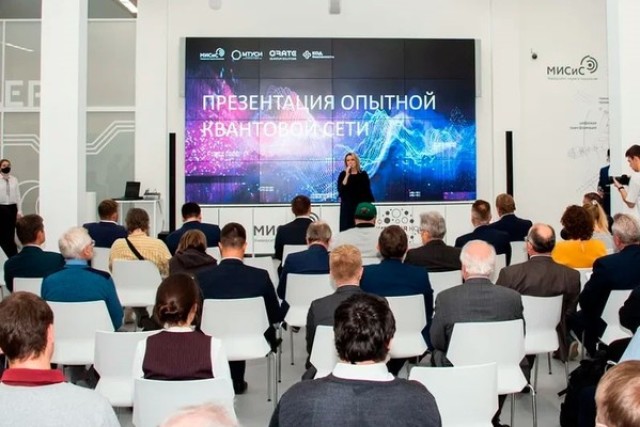The official launch of Russia's first interuniversity quantum network with open access, which united the campuses of the National Research Technological University "MISIS" and the Moscow Technical University of Communications and Informatics (MTUCI), took place on Wednesday in Moscow, the press service of MTUCI reported on Thursday.
Recall that testing of the network began in August. The project of creating an open quantum network is being implemented by the participants of the consortium of the Competence Center of the National Technological Initiative (NTI) "Quantum Communications", created on the basis of NUST MISIS: MTUCI, LLC "Kurate", LLC "Security Code".
The interuniversity quantum network consists of five nodes located in the buildings of NUST MISIS and MTUCI, it has an open architecture and scales as new participants appear. Universities, research organizations, partner companies, government agencies and student startups get access to the network. On the basis of the network, they can develop information security applications using quantum keys.
Remote access to the quantum network will be free – the developers want everyone to be able to test the quantum communication channel.
As he wrote D-Russia.ru In June, Russia launched the first quantum communication line between Moscow and St. Petersburg. As Deputy Prime Minister Dmitry Chernyshenko said at the time, 7 thousand km of quantum networks will be launched by 2024. The continuation of the project is provided with financing.
About quantum communications
The function of quantum communications (not to be confused with quantum computing, this is another subject area) it consists in providing absolutely secure data transmission channels. Quantum communication technologies have now been developed to the stage of practical use.
Their main advantage is the fundamental impossibility of secret unauthorized access to the transmitted data – such an attempt will be guaranteed to be noticed, because any data removal in the channel changes its state.
A primitive explanation may be as follows. Quantum data transmission involves the delivery of photons from A to B, they are data carriers. It is possible to intercept a photon in the channel, but it is useless: a spy can find out the value (0/1) of a single bit. The photon cannot be read or copied without destroying it, and the reaction to the spy's interference in the data transmission channel, isolating it from the transmitted information, occurs instantly.
Vika Ryabova

